STRENGTH & CONDITIONING NOW & FUTURE

Not to be confused with the athletic trainer, fitness therapist, physical therapist, sports physiotherapist – or, the ubiquitous fitness or personal trainer, the specialist in strength and conditioning (SSC) is a fitness & conditioning and physical
performance professional who uses exercise prescription to improve the performance of competitive athletes. The SSC adopts a holistic approach. He necessarily has to combine strength training and aerobic conditioning along with other exercise, psychological and nutrition technologies. They also help athletes prevent injuries assist in developing and proper biomechanics within their sports performances.
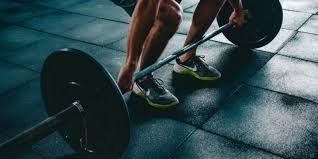
India has seen a growth in numerous S&C education and training programs. Their existence evidences the growing popularity of S&C as a career. They work with sports teams across a range of competitive levels – from schools to world championships and Olympics – as well as individual sports professionals. S&C gained in popularity when, over two decades ago, India cricket teams began to be supported by overseas conditioning coaches, biomechanists and sports medicine experts.
Field hockey experienced positive contributions made by these specialists too. With the advent of professional leagues in a whole range of sports, foreign coaches were introduced. They in turn brought their own support specialists. And now, they are increasingly being employed by coaching academies.

SSCs in India too now have the option to focus in specific sports or games and within each sport specialize training technology, training philosophy, or work in the university or under-21 / 18 / 16 age group levels. He was largely confined to the strength aspects of S&C but in recent years, training programs have begun to include anaerobic and aerobic strength components as well as speed, power, agility and flexibility training to match the metabolic and physical demands of the specific sport. For aerobic training the SSC determines the type, duration, and frequency of each exercise.
For strength exercise prescription, the type of exercise, total session volume, rest period, frequency, and intensity are determined. Sports medicine and sports nutrition are not within their ambit of qualification and work.
Interestingly, I find SSCs now in gainful employment with schools across India. Physical education is being supplemented by S&C programs, of course, adapted to the requirements of growing children. Undoubtedly, school children cannot be treated as physically mature, supremely conditioned adults. As Prof Ian Jeffreys points out – see below – schools provide the time and facilities for developing athletic qualities in children.
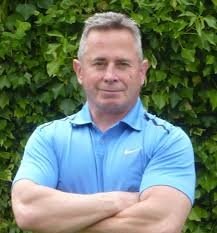
Prof Jeffreys is an internationally renowned coach, educator and author who co-ordinates all the strength and conditioning (S&C) activities in University of South Wales, UK. He is regarded as a world authority in the development of speed and agility and conditioning for team sports, where his unique Gamespeed system and RAMP warm-up protocols have been adopted by a wide range of coaches and organizations across the world. Ian is on the British Olympic Association register of strength and conditioning professionals. He is a Founder member of the United Kingdom Strength and Conditioning Association. He has worked with athletes, clubs and sports organizations around the world including the UK, USA, China, Australia and Korea.
He has been a member of the USA’s National Strength and Conditioning Association (NSCA) since 1989. He is a Certified Strength and Conditioning Specialist (CSCS), and Certified Personal Trainer (NSCA-CPT) with the NSCA and has been re-certified with Distinction (D) in both categories. He is also an Emeritus Registered Strength and Conditioning Coach (RSCCE), the highest coaching award the NSCA bestows.
He has authored several books including Total Soccer Fitness and Developing Gamespeed; he has authored over 15 book chapters including the warm-up and stretching chapter for the third edition of the Essentials of Strength Training. He is the Editor of the UKSCA Journal, “Professional Strength and Conditioning” and is on the Editorial Board for the NSCA’s Strength and Conditioning Journal and the Journal of Australian Strength and Conditioning.
We are honored to have Ian as a member of Gāyo’s Guest Faculty. He toured India in May 2018 and October 2019; his May 2020 visit has been rescheduled for obvious reasons! We hope to have his expertise and mentoring in our S&C courses we will be conducting through the University of Mumbai and Assam down town University, Guwahati.
In long chats while driving with him (especially the memorable trips from Goa to Belgavi and vv) and over the telephone, Ian has expressed his views on S&C – it history, nature and scope – which I now share with you!
In Strength & Conditioning (S&C) which is more relevant – the “S” or the “C”?
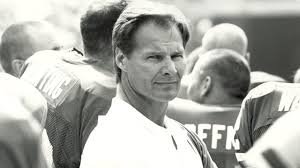
Words influence the way we think and shapes our perspectives on any subject. This question only comes about because of the term strength and conditioning, itself. The term S&C has its genesis in the work of Boyd Epley at the University of Nebraska. Epley was one of the pioneers in the use of strength training to enhance sports performance, with emphasis initially on American Football.
Given its dependence on strength / power and the potential advantage of muscle mass in a physical contact sport, weight training was a natural addition to the training of any player but had ironically been overlooked for many years. Epley rapidly established a strength program at Nebraska that helped drive the American Football program to remarkable success and soon the role of the strength coach started to gain traction at multiple institutions. Such was the demand for information that he founded National Strength Coaches Association 1978.
However, as the field grew it was clear that sports performance depended upon a range of fitness parameters and should not be limited to strength alone. Elements such as agility, speed, power and endurance were as relevant as strength training and the importance depended upon the needs of different sports and different athletes. Soon, the association relabeled itself as National Strength & Conditioning Association in consonance with this widening of the concept of sports conditioning and training but keeping the acronym NSCA.
Sports conditioning should never be limited to strength and should be geared to the specific requirements of the athlete and the sport So activities such as Olympic lifting can be a great tool but don’t have to be universally applied for the term strength and conditioning to apply. So, conditioning for sports such as Badminton or Cricket should not necessarily look like the activities used in sports such as American Football where strength and power are crucial.
Thus, S&C might be more accurately termed as Sports Conditioning or Sports Performance Development – or, maybe, even Athletic Development. Again, words can be deceptive as ironically some people often consider that the role of an Athletic Trainers would be similar to the strength and conditioning coach – yet this term has a completely different meaning and is an American term relating to work focusing around sports injury and rehab.
Conditioning includes strength, of course, but it also encompasses a diverse range of fitness parameters such as agility, speed, power and other athletic attributes necessary for improving physical performance. Therefore, holistically, while strength will often form a cornerstone the structure of any Conditioning program will always be objective-specific and within each sport, individual-specific. To say that S&C is Strength alone, is thus a misconception.
We often see the term Sports Conditioning – is there a relationship between this and S&C?
As we discussed earlier, the term strength and conditioning has its origins in the US and in the expansion of the acronym NSCA. If we are realistic, if we were to develop a term today for what we do it would not be strength and conditioning, but as it has a great deal of traction it is still used extensively. Sports Conditioning to me is just another term for S&C and maybe one that better encompasses the balanced approach to developing performance.
Would you agree with this: S&C is the work done by the former USSR in training their athletes?

In the 1950s, 1960s, 1970s and early 1980s, the USSR (Soviet Union) and its erstwhile Eastern Bloc allies like, in particular, East Germany were athletic powerhouses in Olympic sports and much of this dominance related to the training practices they put in place. These countries were two of the earliest to have Sports Scientists (like the legendary Dr Yuri Verkhoshansky) work directly with national and international level sportsmen, supporting the work of sports coaches. These countries aimed to develop a great deal of political prestige out of sporting success, especially in the Olympic arena. The focus on Olympic sports, with long preparation periods and often with highly measurable performance indicators made them ideal candidates for the systematic and measurable approach developing in the Eastern Block. Extensive support mechanisms were put in place for these sports and perhaps the biggest influence to develop out of this was the concept of periodization.
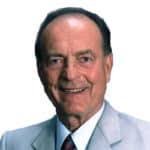
So, yes, they were applying many of the concepts that have since become part of the strength and conditioning vernacular, but this development was running alongside developments in the US and in Western Europe. Indeed, one of the characteristics of this time was the demand for information from the west on what was being done in the East – the search for secrets! One of the key people in facilitating the transfer of information at this time was Michael Yessis and his Soviet sports review.
Since the fall of the Berlin Wall (in late 1989) many of the sport scientists working in the East headed and many of the practices soon entered the western system and since there has been a mixing of approaches.
What is the American contribution?
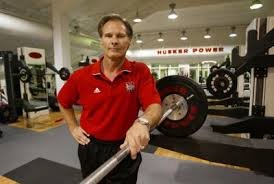
In the first half of the 20th Century, “Weight Training” had already gained popularity thanks to the influence of training concepts from bodybuilding, Olympic Lifting and latterly, power lifting. However, the large part these activities remained separate to sports training and there was a general reluctance to incorporate these methods in the training of athletes. So, whilst there were examples of athletes using these methods these remained by and large anomalies. The systematic application of strength training into Athletic programs only really emerged with the work of individuals such as Boyd Epley.
Since then the role of a strength and conditioning coach has become an integral part of the support teams for most sports and increasingly at diverse levels. Importantly, and quite differently to the Eastern European development, this has been driven predominantly by team sports. Increasingly a realization that a range of approaches are needed for effective application of strength and conditioning has become increasingly evident.
Interestingly Western Europe was slow to adopt these methods and even in contact sports such as rugby the emphasis was more on endurance and less on strength, even up to the early 1990s. Here, sport scientists, especially physiologists, often assumed the roles of fitness coaches and many conditioning programs were built around the mythical VO2 max.
Europeans are akin to the American in physique and capacities. But where do the Asians stand?
I think it’s too easy and wrong to try to categorize in these broad terms as great differences exist and there is no single American physique or Asian physique.
China for example is a vast country with a huge and diverse population. You have top class basketballers of over 7 feet in height and footballers who are far shorter, In Weightlifting, they compete effectively in the majority of weight categories! So, is there a Chinese physique? Their S&C coaches therefore have adapted themselves to the athletic development required for the range of genetic patterns prevailing there.
Undoubtedly, smaller Asian countries have less diverse populations and this makes them more adept at certain sports and less adept at others. So many counties they have adapted naturally to specific sports. So, if we take India for instance. here you find world class athletes in Badminton, Cricket, Field Hockey and certain weight categories in Boxing and Weightlifting but few elite basketball players or rugby players. Indians tend to compensate for, say, a lack of strength by development in other physical abilities like agility, flexibility, etc.
In many ways, the same holds true in Europe too, were sports participation and expertise depend upon a mix of factors including environmental and historical contexts. Soccer is a vivid example, where it dominates the conversations of countless Europeans and produces a situation where for many, playing soccer will always be a likely sports destination. Similar contexts can also be seen in other countries such as the example of Kenya known for its long-distance runners.
So, S&C can never be seen through a construct of Strength alone. There are multiple fitness components and their influence varies between sports. Crucially in many sports skills matter and no amount of S&C can make up for lack of appropriate sport skill !
What innovations do you foresee?
In strength and conditioning, as in life in general, technology is everywhere. I foresee greater application of technology influencing the profession we know. The ability to measure and monitor an unbelievably vast range of physical performance parameters is expanding at an exponential rate and this is having a great effect on our work. Whilst this is generally positive it does come with caveats. For example, given the growth of AI it could be that many of the key functions we currently undertake may become automated and the value of the human coach may need to evolve.
So, what will remain and, perhaps, become more important will be the skills that cannot be automated. Dealing with complexity and addressing the important human elements of coaching provide a massive challenge to technology and it could be the future value may remain in these realms. This will require a rethink in the way we educate coaches. Traditionally S&C Specialists are generally educated in areas such as Physiology, Biomechanics and Training theory, but this will not be enough in the future. We need to diversify and extend education to incorporate a much wider range of disciplines such as skill acquisition, leadership, pedagogy, behavioral sciences and sensorimotor development.
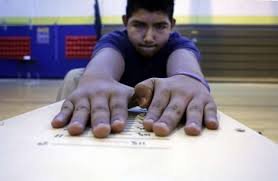
I also see an extension in the application of strength and conditioning beyond the confines of elite sport. One of the most important is the application of athletic development programs into sports clubs and schools. Developing athletic prowess, irrespective of sports, will enable higher levels of performance to be achieved and also allow a lifetime of fitness to ensue. Developing Physical Education teachers and fitness trainers who can develop basic skills like running, body control, jumping and landing would significantly enhance the performance potential of our youth.
I hope that S&C will evolve into a full-fledged profession, with quality education and development opportunities and well rewarded. Importantly, the key skills are distinct from personal training and sports coaching, with the focus on athletic development.
More information about Prof Ian Jeffreys: http://staff.southwales.ac.uk/users/1162-ijeffrey
For Gāyo’s SSC course: https://www.gayofitnessacademy.com/course/certificate-course-in-strength-and-sports-conditioning-ccssc/
